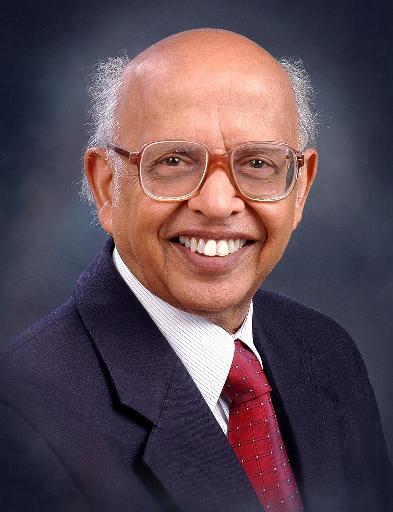 Govind Swarup (Photo courtesy of Govind Swarup)
Govind Swarup (Photo courtesy of Govind Swarup)
Govind Swarup
Article contributed by Kenneth I. Kellermann
The 2007 Grote Reber Medal for lifetime, innovative achievement in radio astronomy is to be awarded to Professor Govind Swarup of the Tata Institute of Fundamental Research (TIFR) in India.
Govind Swarup is being honored for his many contributions to astronomy, for his development of new techniques for radio astronomy, as well as for leading the development of radio astronomy in India for nearly half a century. Following a brief period at the Harvard radio astronomy station at Fort Davis, Texas Swarup went to Stanford where he received his PhD in 1961 working with Ron Bracewell. He returned to India in 1963 to begin a research program in radio astronomy at the TIFR where he led the construction of the Ooty radio telescope which has been used since 1970 o study the angular structure of radio galaxies and quasars, the solar wind, Galactic radio sources, the interstellar medium, pulsars, and cosmology.
More recently, Swarup was the driving force behind the Giant Metrewave Radio Telescope (GMRT) which consists of thirty 45m dishes spread over distances of up to 25 km and is the most powerful radio telescope in the word operating at decimeter wavelength.
The 2007 Reber Medal will be presented to Prof. Swarup by President of the Royal Society, Sir Martin Rees on October 4 at a ceremony at Jodrell Bank. The Reber Medal was established by the Trustees of the Grote Reber Foundation to honor the achievements of Grote Reber and is administered by the Queen Victoria Museum in Launceston, Tasmania in cooperation with NRAO, the University of Tasmania, and the CSIRO Australia Telescope National Facility.
Modified on Tuesday, 19-Jul-2011 14:35:23 EDT by Ellen Bouton, Archivist (Questions or feedback)
|
![[IAU logo]](iau_wb_thumb.jpg)
![[URSI logo]](URSI-logo-thumb.jpg)
![[Karl Jansky at his antenna]](jansky_photo_02_thumb.jpg)
![[Reber's Wheaton antenna]](Reber_Telescope_Wheaton_thumb.jpg)
![[Dover Heights]](Dover_Heights_02_thumb.jpg)
![[4C telescope]](GB61-195_4C_telescope_thumb.jpg)
![[Ewen and horn antenna]](ewen_horn1s.jpg)
![[Dwingeloo, 1956]](Dwingeloo-1956-thumb.jpg)
![[Jocelyn Bell Burnell and Cambridge antenna used in pulsar discovery]](burnell2_thumb.jpg)
![[Lovell Telescope at Jodrell Bank]](site_1594_0001-500-334-20180316163019-thumb150.jpg)
![[Wilson, Penzias, and Bell Labs horn antenna]](wilson-penzias-horn_thumb.jpg)
![[6-m Millimeter Radio Telescope in Mitaka, Japan]](6m-thumb.jpg)

